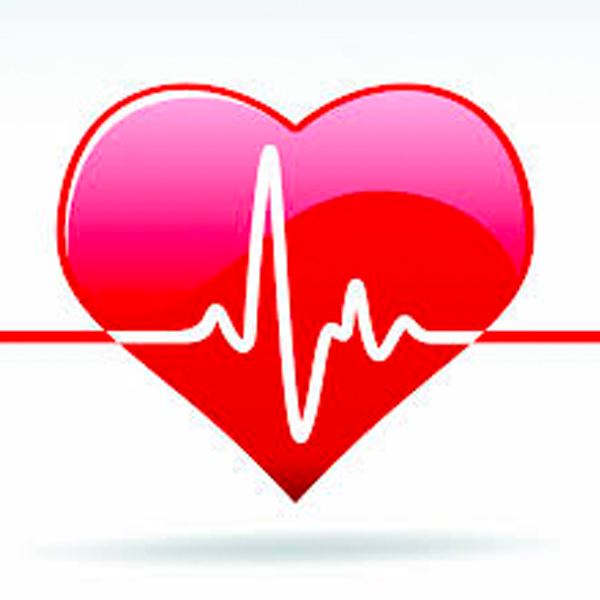February is American Heart Month, a tradition since 1964. During this month, everyone is encouraged to raise awareness against heart disease, which is the number one condition in the country. Research has established that almost half of Americans have at least one major risk factor they are unaware of.
A number of events are held during American Heart Month. Individuals can:
- Get a health check at various health centers that offer free or reduced fee heart screening
- Talk to a health care provider about how to control blood pressure
 Add physical activity to a daily routine such as brisk walking for at least 30 minutes every day
Add physical activity to a daily routine such as brisk walking for at least 30 minutes every day
- Adopt healthy eating habits and choices
- Quit smoking and excessive consumption of alcohol
- Wear red to show support for the cause of promoting heart health in women.
- Participate in Heart Failure Awareness Week
- Heart failure is a progressive condition in which the heart’s muscle gets injured from something like a heart attack or high blood pressure and gradually loses its ability to pump enough blood to supply the body’s needs. The heart can be affected in two ways, either become weak and unable to pump blood (we call this situation systolic heart failure) or it become stiff and unable to fill with blood adequately (we call this situation diastolic heart failure). Ultimately, both conditions lead to retention of extra fluid or congestion. So when patients develop symptoms we call it congestive heart failure. Many people don’t even know they have it because symptoms are often mistaken for signs of getting older. Heart failure does not develop overnight – it’s a progressive disease that starts slowly and gets worse over time.
Despite awareness campaigns, research, and free heart screening services, cardiovascular disease takes the lives of over 17 million Americans every year. It is projected that this number will grow to over 23.5 million by 2030. There is no choice but for everyone to get into the fight for a healthy heart.
Get an annual physical and follow up on any concerns raised by your doctor.
Annual exams usually check your:
History. This is your chance to mention any complaints or concerns about your health. Your doctor will also likely quiz you about lifestyle behaviors like smoking, excessive alcohol use, sexual health, diet, and exercise. The doctor will also check on your vaccination status and update your personal and family medical history.

Vital Signs. These are some vital signs checked by your doctor:
- Blood pressure: Less than 120 over less than 80 is a normal blood pressure. Doctors define high blood pressure (hypertension) as 130 over 80 or higher.
- Heart rate: Values between 60 and 100 are considered normal.
- Respiration rate: From 12 to 16 breaths per minute is normal for a healthy adult.
- Temperature: 98.6 degrees Fahrenheit is the average.
General Appearance. Your doctor gathers a large amount of information about you and your health just by watching and talking to you. How is your memory and mental quickness? Does your skin appear healthy? Can you easily stand and walk?
Heart Exam. Listening to your heart with a stethoscope, a doctor might detect an irregular heartbeat, a heart murmur, or other clues to heart disease.
Lung Exam. Using a stethoscope, a doctor listens for crackles, wheezes, or decreased breath sounds. These and other sounds are clues to the presence of heart or lung disease.
Head and Neck Exam. Opening up and saying “ah” shows off your throat and tonsils. The quality of your teeth and gums also provides information about your overall health. Ears, nose, sinuses, eyes, lymph nodes, thyroid, and carotid arteries may also be examined.
Abdominal Exam. Your doctor can use a range of examination techniques including tapping your abdomen to detect liver size and presence of abdominal fluid, listening for bowel sounds with a stethoscope, and palpating for tenderness.
Neurological Exam. Nerves, muscle strength, reflexes, balance, and mental state may be assessed.
Dermatological Exam. Skin and nail findings could indicate a dermatological problem or disease somewhere else in the body.
Extremities Exam. Your doctor will look for physical and sensory changes. Pulses can be checked in your arms and legs. Examining joints can assess for abnormalities.
Male Physical Exam. Annual physical might also include: Testicular, Hernia, Penis and Prostate exams.
Female Physical Exam. Annual exam might include: Breast and Pelvic exam. A Pap test and HPV test can screen for cervical cancer and help assess risk.
Laboratory Tests There are no standard laboratory tests during an annual physical. However, some doctors will order certain tests routinely:
- Complete blood count
- Chemistry panel
- Urinalysis (UA)
A screening lipid panel (cholesterol test) is recommended every 4 to 6 years, according to the American Heart Association. Abnormal cholesterol levels increase the risk for heart attacks and strokes.
If you are overweight or have any risk factors for diabetes, your blood sugar will likely be checked. The American Diabetes Association recommends that all adults, beginning at age 45, should be tested for diabetes — regardless of weight.
Physicals Should Emphasize Prevention
The annual physical exam is a great opportunity to refocus your attention on prevention and screening:
- At age 50, it’s time to begin regular screening for colorectal cancer. People with immediate family members with colorectal cancer or other risk factors may need to be screened before age 50.
- For some women, age 40 marks the time to begin annual mammogram screening for breast cancer. The American Cancer Society recommends that Women ages 40 to 44 should have the choice to start mammograms if they wish to do so. Women age 45 to 54 should get mammograms every year while women 55 and older should switch to mammograms every 2 years, or can continue yearly screening. Women should talk to their doctor or other health care professional about when to start and how often to get a mammogram. There are different guidelines for breast cancer screening depending on your personal risk for getting breast cancer and whose guidelines you chose to follow. Women should weigh the benefits and risks of screening tests when deciding whether to begin getting mammograms at age 40.
 Healthy behaviors work far better than medicine at preventing illness, and don’t require a prescription:
Healthy behaviors work far better than medicine at preventing illness, and don’t require a prescription:
- Do 30 minutes of brisk walking or other exercise most days of the week (or about 150 minutes a week). And add in some strength training at least twice a week. Your risk for cardiovascular disease, diabetes, and some types of cancer will fall dramatically.
- Eat a mostly plant-based diet, low in animal fats.
- Above all, don’t smoke.
- If you’re prescribed medication, take it according to your doctor’s directions.
- Get enough sleep
Exercising, keeping a healthy weight, and not smoking are enough to keep most of us in good health, with or without an annual exam. Still, no one can argue with keeping up a good relationship with your doctor through regular visits. As long as you and your doctor are paying attention to prevention and your overall health, the details are up to you.
Clean up your sleep hygiene.

Is your phone keeping you up at night? With a few tweaks to your tech habits, you can wake up more refreshed and ready to face the day.
Charge your device as far away from your bed as possible. Added bonus? The distance may help you feel less overwhelmed in general.
Dim it.
Dim your screen or use a red filter app at night. The bright blue light of most devices can mess with your circadian rhythm and melatonin production.
Set it.
Alarms aren’t just for waking up – set a bedtime alarm to remind you that it’s time to wrap it up for the night.
Lock it.
If you’ve got a scrolling habit you need to kick, try an app-blocking app that makes it impossible to get lost in after-hours emails, social media or gaming.
Block it.
Tell notifications to buzz off if they’re waking you up at night. Put your phone on “do not disturb” mode to block it all out when you’re trying to sleep.




